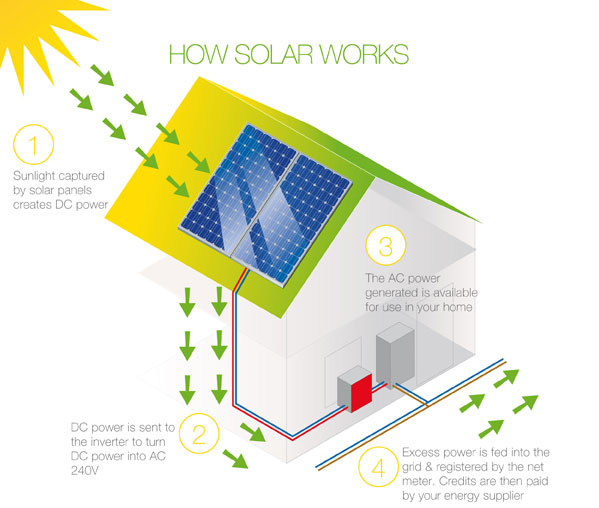Solar energy is a renewable energy resource that uses photovoltaic (PV) systems to create electricity.
Companies design and install solar energy systems based on photovoltaic technology to allow clients produce clean and renewable energy for their residential and commercial properties.
To answer the question, we first have to understand how sunlight is converted to electricity using photovoltaic technology.
We also have to understand that sunlight is comprised of photons of energy.
When these photons of energy reach or hit a solar panel, the solar panel converts the photons into electrons of direct current (“DC”) electricity.
The electrons flow out of the solar panel and into an inverter and other electrical safety devices.
The inverter converts that “DC” power–commonly used in batteries–into alternating current or “AC” power.
AC power is the kind of electrical energy that your television, computer, and toasters use when plugged into the wall outlet.












Comments